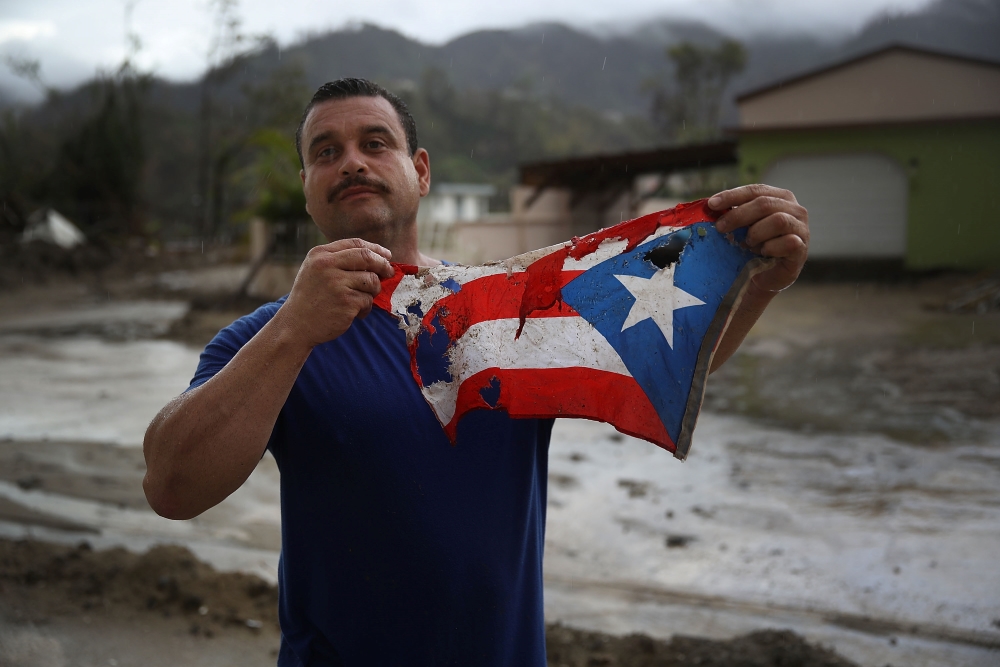Click here to read more of the decade’s 10 biggest stories.
WHO WAS INVOLVED: The people of Puerto Rico, Dominica and neighboring islands; Puerto Rico’s then governor Ricardo Roselló; San Juan mayor Carmen Yulín Cruz; and President Donald Trump.
WHAT HAPPENED: On September 18, 2017 the Category 5 hurricane made landfall on Dominica, causing a nationwide communications failure, battering many residences beyond repair and leaving 34 dead and dozens more missing. In nearby Martinique and Guadeloupe, major flooding crippled infrastructure. But it wasn’t until two days later that Maria’s intensified wrath reached Puerto Rico, leaving thousands dead and many more without power, shelter and basic services — this just weeks after Hurricane Irma had rolled through, causing blackouts, felling trees and damaging thousands of homes.
In the immediate aftermath of the hurricane, the federal government’s mismanagement of aid and the president’s self-congratulatory counternarrative sparked widespread outrage, both on the island and beyond. Trump’s characterization of the relief effort as a success story, the optics of a president gleefully throwing paper towels into a crowd of displaced Puerto Ricans and his public feud with San Juan mayor Carmen Yulín Cruz – who described Maria as “Trump’s Katrina” – combined to paint a portrait of the leader as negligent in a time of crisis. The slow and piecemeal remission of aid dollars to impacted U.S. territories and sovereign nations alike prompted a long-lasting backlash, with recently bankrupt Puerto Rico receiving less than $14 billion of the allocated $42.5 billion in aid as of nearly two years later.
WHY IT MATTERS: The hurricane and its aftereffects took many lives and crippled transportation, sewage and power grids on the islands for months after making landfall, with recovery still incomplete across Puerto Rico today. Maria also left behind a legacy of controversy, most notably when disputed estimates of casualties sparked a public outcry. The official death toll remained low for months following the disaster, prompting President Trump to say on October 3 that Maria did not qualify as a “real catastrophe.” By December that official figure had only reached 64, while journalists and researchers had already documented well over 1000 deaths. The count has not yet been updated to reflect the New England Journal of Medicine’s 2018 estimate of 4,645 calculated by surveying Puerto Ricans and comparing the estimate to official 2016 mortality rates.
Demonstrators in 2019’s revolución de verano rallied around this number, emblazoning flags and walls with 4,645 to highlight the negligence of the president and other officials. Governor Roselló’s disregard for the disaster’s severity was laid bare in a 2019 leak of Telegram messages in which he joked about the hurricane’s mounting death toll, which sparked an uprising that would result in his ouster.
Maria also took an unprecedented financial toll on Puerto Rico and surrounding islands, with losses totaling nearly $92 billion. The process of restoring and rebuilding public services, homes and businesses is still ongoing in Puerto Rico (and beyond) more than two years later. Also in progress: restoring the public’s faith in their institutions and improving disaster preparedness in an era of ubiquitous corruption and climate change.
—
Miller is production editor for AQ



